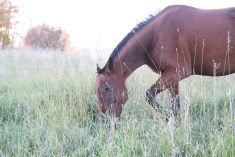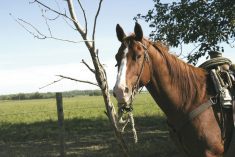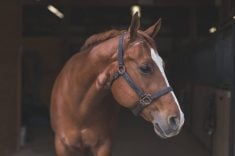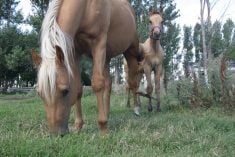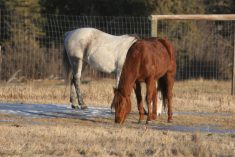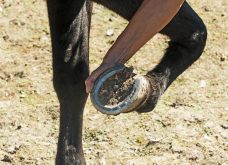“Weekend warrior syndrome” is a modern-day term used to describe what happens when a person is too busy during the work week to exercise, leading them to physically overextend themselves on the weekend.
Humans aren’t the only ones to experience the phenomena.
While most human weekend warriors expect to pay for their exercise spurt with achy muscles, stiff joints and possible injury, many horse owners don’t realize that their equine partners experience similar discomforts and risks after a weekend spurt of intense trail riding, schooling sessions or showing.
The frequency of exercise matters whenever a physical task is assigned, whether that is the training of the human athlete, the agility dog, the racing camel or the performance horse.
This concept can further be expanded to encompass any situation where the animal is placed under unreasonable performance expectations without proper preparation. That includes lack of ongoing continuity and doing too much too quickly. Human and horse bodies do not do well with unreasonable expectations. Knee and shoulder problems are a common consequence for the human weekend warrior and is, in part, responsible for the development of a multibillion-dollar sports medicine industry.
Research in equine physiology has shown that when horses exercise fewer than three days a week, their bodies are not adapted to fitness demands. “Exercise” for the purposes of the studies in the thoroughbred horse was defined as continuous moderate cardiovascular activity of 30 minutes or more.
The adaptive changes towards fitness do not occur on their own. Without bouts of regular and sustained exercise, the animal’s body experiences deleterious effects including poor recruitment and co-ordination of muscle fibres, inconsistent movement patterns, chronic tension, accumulation of metabolic waste in muscle tissue that becomes inflammation, matted fascia and destabilized core muscles.
The musculoskeletal system of the horse is poorly designed to be a weekend warrior.
Weekend warrior syndrome presents a conundrum for the modern-day horse owner regarding whether the situation of their ownership is in the best interest of the animal or even themselves. Just as a human cannot exercise once per week at high intensity and expect good things to happen, nor can it be for the horse.
Horses treated in this manner may exhibit a myriad of symptoms, including delayed onset muscle soreness (especially back pain), sprains, strains, soft tissue tears, joint injury, bone bruising, inflammation and foot pain. The horse becomes at risk for laminitis, colic and tying up.
Tying up, also known as exertion rhabdomyolysis, is caused by severe muscle inflammation and can lead to muscle tissue damage, causing a muscle pigment called myoglobin to be released into the bloodstream. When this pigment is filtered by the kidneys in large amounts, it can cause kidney damage. This is a medical emergency often requiring veterinary intervention and treatment.
The ability of the horse to meet the demands of intermittent bouts of exercise will depend on the individual animal and its circumstances. A horse turned out to pasture is not likely to exercise itself enough to challenge its body’s tissues and gain the strength, flexibility and endurance required for more strenuous activities — even more so for the stalled horse with limited turnout time.
Extending a sedentary and likely unfit horse beyond its physical limitations can significantly alter the horse’s attitude toward its handler, as the unpleasant experiences of being overexerted tend to become associated with the handler. Repeated exposure to mental and physical discomfort begins to taint the human-horse relationship as the horse understandably begins to develop an aversion towards human contact.
Particular care needs to be taken with youngsters and older animals. Unreasonable expectations quickly derail the confidence of younger animals, that simply cannot achieve or sustain the unreasonable goals asked of them.
In addition to general lack of conditioning, factors contributing to the equine weekend warrior syndrome are excessive body condition (body condition score of seven or greater), hot weather (especially when combined with high humidity), dehydration, deep footing of mud or sand, rocky terrains and lengths of trailering. Ill-fitting tack further compounds troubles for the horse.
Evaluating the horse’s lifestyle is a crucial step in responsible horse ownership. Natural movement promotes general health of all systems. The nature of general health will determine the outcomes when stressed with activity — both reasonable and unreasonable. Whether it is a strain in endurance or intensity, equine weekend warrior syndrome is avoidable. Owners, handlers and riders need to prepare and condition the animals’ bodies for the task at hand and, if not, consideration needs to be taken for the animal’s potential limitations.




